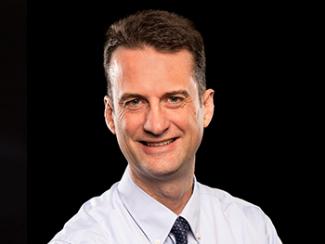
Senior Research Scientist
Peter Barrance, Ph.D., is a Senior Research Scientist in the Center for Mobility and Rehabilitation Engineering Research, and a Research Associate Professor of Physical Medicine and Rehabilitation (PM&R) at Rutgers New Jersey Medical School. He directs the Musculoskeletal Biomotion Research Laboratory within the Center, and he additionally holds the title of Clinical Research Scientist at Children’s Specialized Hospital. Dr. Barrance received a bachelor’s degree in engineering science and a master’s degree in engineering mechanics at Iowa State University, and received research experience as a biomedical engineer in the Orthopaedic Biomechanics Laboratory at Johns Hopkins University. Following this, he pursued his doctoral degree in mechanical engineering at the University of Delaware, participating in interdisciplinary research with advisership by both engineering and physical therapy faculty. In his dissertation work he developed and deployed a method to analyze knee joint motion in individuals with ligamentous injury using dynamic MRI. Following a two year post-doctoral fellowship at the University of Delaware, he joined Kessler Foundation in 2006. At Kessler Foundation he has continued to pursue research in disability with musculoskeletal origins, including a federally funded line of research on weight bearing imaging of the knee joint in individuals with knee joint osteoarthritis. This interest is complemented by an emphasis in pediatric mobility rehabilitation, in collaboration with physicians, physical therapists and researchers at Children’s Specialized Hospital.
Dr. Barrance and his group pursue interests in several topics that have the common goal of advancing standards of care in the rehabilitation of adults and children with disabilities. He continues to pursue a long standing interest in imaging methods to evaluate conservative interventions for osteoarthritis, as supported by funding from the National Institute on Disability, Independent Living, and Rehabilitation Research. His interests in musculoskeletal evaluation also span into adults with spinal cord injury, through collaborations with Dr. Gail Forrest, Director of the Center for Spinal Stimulation at Kessler Foundation. Ongoing work uses MRI methods to evaluate changes in muscle size and composition following interventions that include intensive exoskeletally assisted ambulation. Dr. Barrance has also recently initiated a new line of research that uses shear wave ultrasound imaging to investigate changes to tendon stiffness in adults with spinal cord injury.
Through his work with pediatric physicians and physical therapists at Children’s Specialized Hospital, Dr. Barrance has led the development of a system that uses wearable sensors to provide movement biofeedback to assist gait retraining in children with hemiplegic cerebral palsy (CP). This system is being tested at Children’s Specialized Hospital in a clinical trial involving children who have CP. Also in collaboration with Children’s Specialized Hospital, Dr. Barrance’s team performs research that employs wearable sensing and instrumented wheelchair pushrims that seeks to describe and improve manual propulsion styles across wheelchair types and environmental situations.
View a comprehensive listing of publications for Dr. Barrance on Research Gate